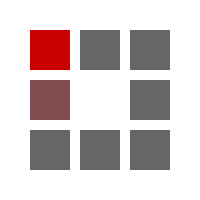Can Magic Mask 2 take the heavy lifting performed by Power Windows?
It’s undeniable that digital video post production tools are undergoing a revolution powered by advances in machine learning. In the language of Blackmagic Design, these tools are tagged as the DaVinci Neural Engine. Most of them are either Studio-only tools or tools available in the Free version but have Neural Engine options for the paid version of Resolve. If you’re interested in a summary of those tools (and when they were introduced), reveal the accordion below.
This Insight focuses on Magic Mask 2 and was inspired by a job I graded earlier this year.
Grading a day-for-nightish interior wide shot
I was hired to grade two scenes for a director/producer raising funds for a feature film. Both scenes are interiors, and the time of day is twilight.
Despite the unintended challenges typical of this type of limited-budget project, we were able to give both scenes an early evening feel. But there was one shot – a wide angle – that I was unhappy with. As you’ll see in this video Insight, I initially achieved the look using Inside/Outside Power Windows.
Ideally, Magic Mask would have been the better tool for this shot. But it was too ‘twitchy,’ and I couldn’t get it to work.
This Insight will look at how Magic Mask worked in Resolve 19, using the wide shot as my test. Then, we’ll try again using Magic Mask 2 in Resolve 20 – and I’ll share my results and my ‘Hot Take’ conclusion.
Key takeaways from this Insight
By the end of this Insight:
Member Content
Sorry... the rest of this content is for members only. You'll need to login or Join Now to continue (your career will thank you!).
Need more information about our memberships? Click to learn more.
Membership optionsMember Login




